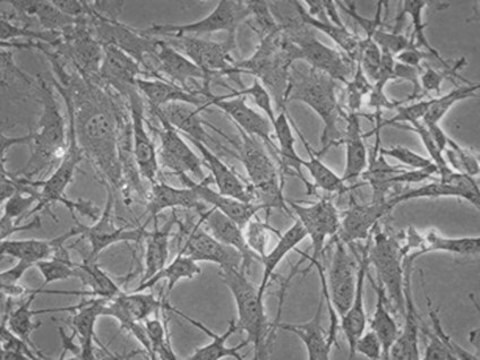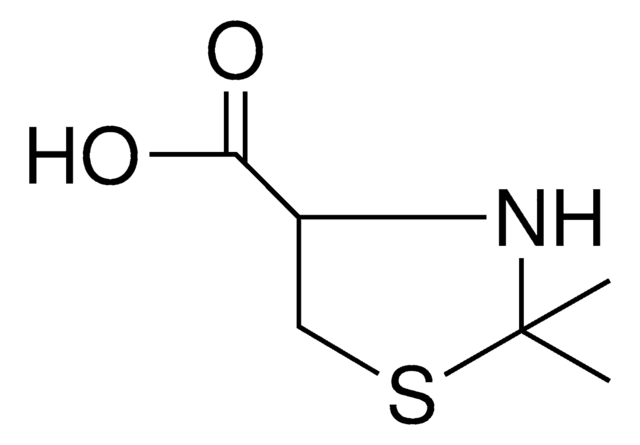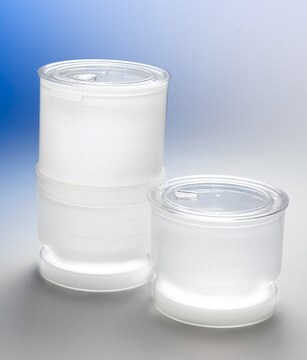SCC495
Mouse OP9-DL4 Notch Ligand Cell Line (-GFP)

Synonym(e):
DL4 cell line, Delta-like 4 cell line, Notch ligand cell line, OP9-DL4, OP9-DL4 cell line
About This Item
Empfohlene Produkte
Biologische Quelle
mouse
Qualitätsniveau
Verpackung
vial of ≥1X10⁶ cells/vial vial
Hersteller/Markenname
Millipore
Methode(n)
cell culture | mammalian: suitable
Versandbedingung
liquid nitrogen
Lagertemp.
−196°C
Anwendung
- Each vial contains > 1X106 viable cells.
- Cells are tested negative for infectious diseases by a Mouse Essential CLEAR Panel by Charles River Animal Diagnostic Services.
- Cells are verified to be of mouse origin and negative for interspecies contamination from human, rat, Chinese hamster, Golden Syrian hamster, and nonhuman primate (NHP) as assessed by a Contamination Clear panel by Charles River Animal Diagnostic Services
- Cells are negative for mycoplasma contamination.
Leistungsmerkmale und Vorteile
Zielbeschreibung
Notch signaling controls multiple cell-fate decisions. Four Notch receptors (Notch 1- Notch 4) have been identified in mammals. These receptors interact with Jagged or Delta-like (DL) family members of Notch ligands. This is followed by cleavage of the intracellular domain of Notch and its subsequent translocation into the nucleus, where it binds with transcription factors and activates transcription of various downstream target genes. Notch signaling is essential in early T- cell lineage commitments. Bone marrow progenitor cells expressing constitutively-active Notch develop into CD4 and CD8 double positive T cells rather than B cells. They also play an important role in development of CD4+ and CD8+ single positive cells from double positive precursor thymocytes, in addition to development of T-cells with αα+ TCRs. Of the 4 Notch receptors, Notch1 (N1) receptor signaling has been shown to be sufficient for T cell development. The delta like ligands are physiologically relevant N1 ligands. DL1 interacts with both N1 and Notch 2 (N2) to induce T- cell lineage commitment. However, DL4 interacts specifically only with N1 and supports T cell commitment and maturation both in vitro and in vivo. Moreover, results from previous binding studies show that binding between DL1 and N1 is weak as opposed to the stronger binding between DL4 and N1. Of the DL1 and DL4 delta like ligands, DL4 exhibits greater capacity to activate the Notch pathway in hematopoietic progenitor cells.
SCC495 OP9-DL4 Cell line has had the GFP coding region removed from the original pMiGR plasmid, resulting in no GFP expression for this cell line.
Source
OP9-DL4 cells were genetically modified from OP9 stromal cells derived from mouse bone marrow.
References
1. Immunity 2002, 17(6): 749-756.
2. J Orthop Sci. 2005, 10(6): 589-594.
3. Curr Opin Immunol. 2007, 19(2): 163-168.
4. Cold Spring Harb Protoc. 2009, 2009(2): pdb.prot5156.
Lagerung und Haltbarkeit
Sonstige Hinweise
Haftungsausschluss
Lagerklassenschlüssel
10 - Combustible liquids
WGK
WGK 3
Flammpunkt (°F)
Not applicable
Flammpunkt (°C)
Not applicable
Analysenzertifikate (COA)
Suchen Sie nach Analysenzertifikate (COA), indem Sie die Lot-/Chargennummer des Produkts eingeben. Lot- und Chargennummern sind auf dem Produktetikett hinter den Wörtern ‘Lot’ oder ‘Batch’ (Lot oder Charge) zu finden.
Besitzen Sie dieses Produkt bereits?
In der Dokumentenbibliothek finden Sie die Dokumentation zu den Produkten, die Sie kürzlich erworben haben.
Unser Team von Wissenschaftlern verfügt über Erfahrung in allen Forschungsbereichen einschließlich Life Science, Materialwissenschaften, chemischer Synthese, Chromatographie, Analytik und vielen mehr..
Setzen Sie sich mit dem technischen Dienst in Verbindung.







